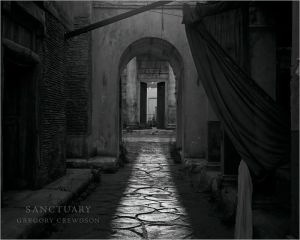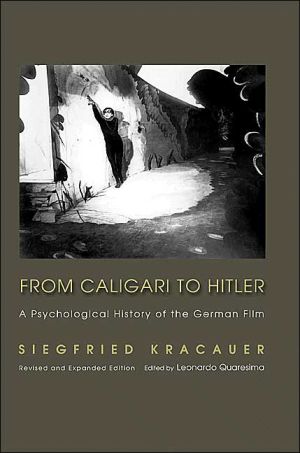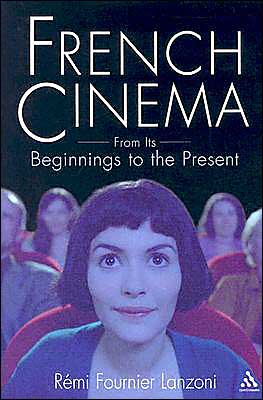Latin American Melodrama: Passion, Pathos, and Entertainment
Like their Hollywood counterparts, Latin American film and TV melodramas have always been popular and highly profitable. The first of its kind, this anthology engages in a serious study of the aesthetics and cultural implications of Latin American melodramas. Written by some of the major figures in Latin American film scholarship, the studies range across seventy years of movies and television within a transnational context, focusing specifically on the period known as the "Golden Age" of...
Search in google:
The first book to consider cinematic and televisual melodrama in a broad Latin American and U.S. Latino context.
Latin American Melodrama\ Passion, Pathos, and Entertainment \ \ UNIVERSITY OF ILLINOIS PRESS\ Copyright © 2009 Board of Trustees of the University of Illinois\ All right reserved.\ ISBN: 978-0-252-03464-0 \ \ \ Chapter One\ Melodrama of the Spirited Woman Aventurera\ GILBERTO PEREZ\ Everybody speaks of melodrama, often disparagingly, but it's not easy to define it. The definition I heard as a kid was that melodrama makes the characters subordinate to the plot, but when I read the Poetics I saw that Aristotle prescribed the same thing for tragedy. Some would define melodrama by its play on our feelings, by the intensity of emotion that it elicits, but that again scarcely distinguishes it from tragedy. Looking to the audience, others would distinguish melodrama as popular art from tragedy as elite art, but then few tragedies would make the grade besides the courtly French ones, and Shakespeare's would be melodramas. Once I asked an older colleague at the school where I teach what the difference was between tragedy and melodrama, and he answered: "If you don't like it, it's melodrama." Still others would say that the crux of melodrama is a simplified moral scheme, an unqualified conflict between good and evil, virtue and villainy, but look, for example, at Stella Dallas, a melodrama if there ever was one, and you will find no villains.\ If, like tragedy, melodrama tells a sad story, often enough, like comedy, it comes to a happy ending. It should be considered not only in relation to tragedy but also to comedy. Comedy and tragedy are ancient, whereas melodrama, Peter Brooks maintains, "appears to be a peculiarly modern form" whose origins "can be accurately located within the context of the French Revolution and its aftermath" (14). But a form arising from a break with tradition may still have links to traditional forms. This is how John G. Cawelti describes the melodrama of the late eighteenth century:\ The central figure ... was usually a virtuous young lady of some lower or ambiguous status—village maiden, orphan, daughter of parents in reduced circumstances—who was pursued by a male character of higher status and dubious intentions, a figure of aristocratic, erotic, financial, and social power; in other words, some form of the stereotypical squire with curling mustaches. The sorely beset heroine commonly loved a more worthy and innocent young man, who was himself enmeshed in status difficulties, often because his true parentage was concealed for one reason or another. This primary triangle was the essence of melodrama and was capable of two major permutations, corresponding loosely to comic and tragic modes of action. In the first case, the heroine resisted the entreaties and threats of the villain and was ultimately united in marriage with the noble young man.... In the tragic melodrama, the heroine succumbed to the villain's plots.... The single most important outcome of any melodrama was the marriage of the virtuous heroine to the right man—or, in the tragic version of melodrama, the degradation and death of the fallen heroine. (33–34)\ This largely remains, more than a century later, the plot of Griffith's Way Down East—except that the Lillian Gish heroine, even though she succumbs to the villain, nonetheless abides in her virtue, narrowly escapes death, and marries the noble hero. The tragic and comic modes of melodrama that Cawelti differentiates come together in this movie. They are not so far apart, after all: the desired outcome, marriage to the right partner, is in both cases the same. And that is also the desired outcome of comedy, what Aristotle might call the final cause of the plot. Whether comic or tragic, melodrama can be said to be in that way essentially comic.\ The melodramatic plot that Cawelti outlines recalls the plot of New Comedy, in which young lovers meet with opposition to their union and, through developments as contrived as those in melodrama, get the better of the blocking figures in their way and reach the happy ending of marriage. There are differences, of course. Neither virtue nor villainy is as heightened in comedy as it is in melodrama. The heroine's virtue is not so crucial in comedy, the young woman herself usually not so central, the blocking figures not so sinister as the villain of melodrama. Marriage in comedy is not the matter of life and death that it is in melodrama. But it is a matter of life: comedy seems to have originated in rituals of fertility, and the concluding union of the young lovers celebrates procreation. And more than a personal affair, their marriage is a matter of life in society: like the melodramatic villain, the comedic blocking figures enjoy social prominence and power, and the young lovers' triumph represents a renewal of the social order. Tearful like tragedy, melodrama, even when it ends unhappily, shares with comedy a reaching toward a happy marriage implying a larger social happiness. Way Down East ends not just with a marriage but with three at once. After the awful winter storm that almost kills the heroine on an frozen river, in this communal happy ending spring triumphs over winter as in the ancient ritual at the root of comedy.\ Comedy, as Northrop Frye says, is about incorporation into society, and tragedy about isolation from it. Melodrama unstably combines isolation and incorporation. Much of it takes place in privacy, within closed doors, and yet no form has been more social: what would be kept inside always reflects what's going on outside. A bourgeois form—whose original villain, in the days of bourgeois struggle with aristocratic rule, was a figure of the aristocracy—melodrama expresses the contradictions of bourgeois thinking, the individualist emphasis on privacy coming into continual tension with the public business, the capacity to determine social existence, of a once-rising and now-ruling class.\ Like Way Down East, Aventurera is a melodrama whose heroine succumbs to the villain yet marries the hero, a fallen woman who bounces back. And bounce she does, Elena, a cabaret dancer of quick beat and fast ways, tough and loud and fiery, an angry tigress ready to pounce and take revenge on those who wronged her—a far cry from the demure and dignified Lillian Gish, who has her own strength but not this indomitable energy. Elena is portrayed by Ninón Sevilla, a Cuban dancer and actress who became a movie star in Mexico, where Aventurera was made in 1949, part of a cycle of melodramas called cabareteras, or cabaret pictures, and a very popular one. Alberto Gout directed; Alvaro Custodio, like Buñuel an exile from fascist Spain employed in the Mexican film industry at that flourishing time, wrote the story and co-wrote the screenplay; and several noted musicians participated: the composer and lyricist Agustín Lara, the crooner Pedro Vargas, Ana María González, Pérez Prado, and the Trio Los Panchos. So salient are the musical numbers that the movie has been called a compound of melodrama and musical, but better to call it a melodrama in the original sense of the word, a drama with music.\ In the city of Chihuahua, Elena is the daughter of a respectable bourgeois family and such a good girl that when her dance class lets out early she goes straight home, where she finds her mother kissing Ramón, the chauffeur. Elena walks away appalled, thinking of her loving father and her betraying mother, who now runs off with Ramón. "I'll never forgive her," she says. "Ramón is a scoundrel. If some day I come across him I'm capable of killing him"—at which point the sound of a gunshot is heard, the sound of her father killing himself. All this happens as quickly and disconcertingly as in a dream. Melodrama, as Eric Bentley put it, is the naturalism of the dream life (Bentley 1964, 205).\ Now we move to Ciudad Juárez, where Elena is on her own. Practically an orphan, certainly in reduced circumstances, she fits Cawelti's description of the melodramatic virtuous young lady. She has a succession of jobs, which she quits because men keep accosting her, and then she runs into Lucio (Tito Junco), a shady character, good-looking and mustachioed, not the aristocrat of old melodrama but a lowlife. He promises her a job with a woman named Rosaura (Andrea Palma) who needs a secretary, he says, but who actually owns a cabaret that doubles as a whorehouse and who by deceit and force enlists Elena into her dual establishment. "You won't get out of here," she tells her. "Whoever enters this business, hear me well, never leaves it." Much later we find out—it is the biggest surprise in a film full of twists, coincidences, and improbable turns of plot—that Rosaura has another life as an aristocrat, or the latter-day equivalent, a figure of the high bourgeoisie. It is a person of higher social status, after all, who leads the virtuous young lady into perdition.\ This film is crammed with incidents yet punctuated with pauses at musical numbers commenting on the action and opening it to reflection. Before he introduces her to Rosaura, Lucio has dinner with Elena—though we see no eating, just drinking—in the cabaret, where there is a show on a stage. First Ana María González sings "Adiós," which alludes to Elena's impending good-bye to her life of virtue. Then Pedro Vargas sings "Amor de Medianoche" (Midnight Love), Elena and Lucio get up to dance, and when Vargas intones the words "puerta de pecado" (door of sin), Rosaura, watching from her office above the dance floor, notices "Lucio the pretty boy. He brings a girl. Nobody can pick them better." We again see Elena and Lucio dancing, and from her perspective we get a blurred, intoxicated view of the singer on stage. By the time she's taken to see the woman who will employ her, Elena is quite drunk: "But, Lucio, I'm going to see two women instead of one." Beyond her drunken vision, this remark alludes to the two women who bring on Elena's ruin, her mother and Rosaura, and the two women Rosaura is, the whorehouse madam and the upper-class matron.\ "It took me work to tame her," Rosaura tells Lucio after some time has passed, but now Elena "is a sensation as a dancer." Elena has not been tamed, though—she gets into fights so often that Rosaura fears that the police may close the cabaret—and Ninón Sevilla, who choreographed her own numbers, is not an accomplished dancer. But, in a way she might not have managed had she been a better dancer, she is a sensation all the same, precisely because she is untamed, appealingly unrefined. Some take her numbers to be camp, but the fun she had doing them is palpable on the screen, and rather than laughing at her expense we can have fun along with her. The musical is the genre of high spirits, and Aventurera, though terrible things happen to the heroine and she retaliates in kind, is a melodrama of the spirited woman.\ Forcibly pulled away from one of her fights by the thug Rengo (Miguel Inclán, who played the blind man in Buñuel's Los olvidados) and dragged upstairs for a dressing-down by Rosaura, the chastised Elena returns to the cabaret. As she steps down to the floor, Pedro Vargas steps up to the stage, which begins a counterpoint of movements and gestures and glances enacted between Vargas and Elena as he sings and she listens. He sings the title song, written by Agustín Lara: "Vende caro tu amor, aventurera" (Sell your love dearly, adventuress). In this remarkable sequence the song not only comments on the action but also enters into it. The singer addresses the song directly to the heroine, and she assumes the position of the referent and recipient.\ As Vargas intones the word "aventurera," a cut to a reverse angle shows Elena looking at him and responding with wrinkled brow to his singing about "el precio del dolor" (the price of pain). Cut back to him, returning her gaze, then back to her, who now starts moving toward him. The camera moves with her, bringing him into view just when he says "tu pecado" (your sin), and now that the two are framed together, he starts moving on the stage in a direction parallel to hers on the floor and to the camera movement. At the point when she, approaching the stage, lines up with him and he halts, there is a cut to a higher, wider view, the camera continuing to move with her as she walks across the floor to the other side. He starts moving again, looking at her, but now she moves away from him and seems to be avoiding his gaze; she hides behind a pillar as if ashamed of what the song is saying about her. Cut closer to her as he sings about "la infamia de tu cruel destino" (the infamy of your cruel destiny) and she starts moving again, away from the stage. But she turns to look at him, prompting a cut to a close-up of him singing "marchitó tu admirable primavera" (wilted your admirable springtime), followed by a cut to a deep-focus shot with her in front and him well in back, the two of them and the camera again moving in parallel paths, now in the opposite direction, leftward rather than rightward as before. When Vargas, a distant figure on the stage, comes to a halt, so does Elena, hiding behind another pillar, and the two of them again line up on the screen, so exactly that she obscures him from view. At this point, reasserting the parallel, the film cuts from the heroine's profile to the singer's, in close-up, as he reprises the line "Vende caro tu amor" and turns to look at her when he sings the word "aventurera." Cut to a reverse angle that shows her in close-up as, emerging from behind a curtain, she turns to look at him and faces the camera.\ Judging from this film, the only one of his that I have seen, Alberto Gout is a very good director. Pedro Vargas is stiff, but Gout orchestrates the singer's movements together with Ninón Sevilla's and the camera's—and with the words of the song—in a way that brings the singer and the song into arresting rapport with the action and the heroine being addressed. This is true melodrama, music not merely as accompaniment, background, interlude, but as central to the drama. First the heroine recognizes herself in the song and moves toward the singer, but then—the shift marked by a cut when she and he line up—she moves away from the singer and seems upset, shamed by the song. And when—the shift again marked by a cut at a point of alignment—Elena, in frontal close-up, looks at the singer and at the camera and for an instant appears to break out of the world of the movie and look right at us in the audience, then back inside the movie looks at this and that and we're not sure what, Gout does something extraordinary with her gaze and its objects.\ Bringing into the action a song commenting on the action is a self-conscious move declaring the film's artifice, a kind of Brechtian alienation effect. Doesn't melodrama do its utmost to involve us emotionally, the opposite of the calculated detachment, the curb on dramatic illusion and emotion, in Brecht's modernist theater? Most of his plays are in the original sense melodramas, though, dramas with music, and with songs in the manner of musical comedy or comic opera. Comedy has a long tradition of declaring its artifice, a practice of self-consciousness much older than modernism, and what Brecht did, as Eric Bentley has argued, was to apply to tragic situations comedic forms and techniques—not so different from melodrama (Bentley 1975, 158). In addition to making us aware of the film's contrivance, the song that Vargas sings to Elena makes her aware of her own predicament. The gaze she turns to the camera is a gaze of self-consciousness, both the film's and hers.\ Though we just saw her behind a pillar, it is from behind a curtain that she emerges into the close-up at the conclusion of the song. Few will notice this error in continuity, and the curtain suggests, more than the pillar would have, her emergence onto a stage, the stage that is the film, the stage that is her life. And there she is, front and center, no longer trying to hide, aware of the part she is to play, prepared to face her future without being held back by her past, to take command of her life without inhibiting shame. Aventurera has been called a shameless melodrama for the way it dispenses with plausibility in its convoluted plot, and it is also shameless in the way it dispenses with moralizing and embraces the shamelessness of its spirited heroine.\ Who is she looking at when she faces the camera in close-up? At first it is Pedro Vargas as he finishes singing "Aventurera." Then, momentarily, she seems to glance at the viewer. Then a reverse angle shows Lucio as the object of her gaze. Sitting at a table, he has heard the song about the life of sin he led her into, and they exchange glances, she accusingly, he responding with a smirk. But now she looks past Lucio at something all the way across the floor, which is where she was when the song began and where she now resolutely returns. It's a return to the beginning not only of this sequence but also of the whole story of her fall from grace: the object of her gaze is none other than Ramón. Having spotted the scoundrel as soon as he arrives at the cabaret with a party of revelers, she briskly proceeds to break a bottle over his head and to kick him and hit him and kick him as he lies on the floor until Rengo carries her away. Spirited, indeed. The gaze of her self-consciousness, directed in turn at the singer telling her story, at the audience being told it, and one then another villain playing a part in it, lets loose her vengeful fury.\ (Continues...)\ \ \ \ \ Excerpted from Latin American Melodrama Copyright © 2009 by Board of Trustees of the University of Illinois. Excerpted by permission of UNIVERSITY OF ILLINOIS PRESS. All rights reserved. No part of this excerpt may be reproduced or reprinted without permission in writing from the publisher.\ Excerpts are provided by Dial-A-Book Inc. solely for the personal use of visitors to this web site. \ \
Contents\ Acknowledgments....................vii\ Introduction: A Short History of Film Melodrama in Latin America Darlene J. Sadlier....................1\ 1. Melodrama of the Spirited Woman: Aventurera Gilberto Perez....................19\ 2. Melodrama and the Emergence of Venezuelan Cinema Luisela Alvaray....................33\ 3. The Building of a Nation: La guerra gaucha as Historical Melodrama Paula Félix-Didier and Andrés Levinson....................50\ 4. Women as Civilizers in 1940s Brazilian Cinema: Between Passion and the Nation Cid Vasconcelos....................64\ 5. The Humiliation of the Father: Melodrama and Cinema Novo's Critique of Conservative Modernization Ismail Xavier....................77\ 6. Nelson Pereira dos Santos's Cinema de lágrimas Darlene J. Sadlier....................96\ 7. Luis Alcoriza; or, A Certain Antimelodramatic Tendency in Mexican Cinema Marvin D'Lugo....................110\ 8. Weeping Reality: Melodramatic Imagination in Contemporary Brazilian Documentary Mariana Baltar....................130\ 9. Televisual Melodrama in an Era of Transnational Migration: Exporting the Folkloric Nation, Harvesting the Melancholic-Sublime Catherine L. Benamou....................139\ Contributors....................173\ Index of Names and Titles....................175








